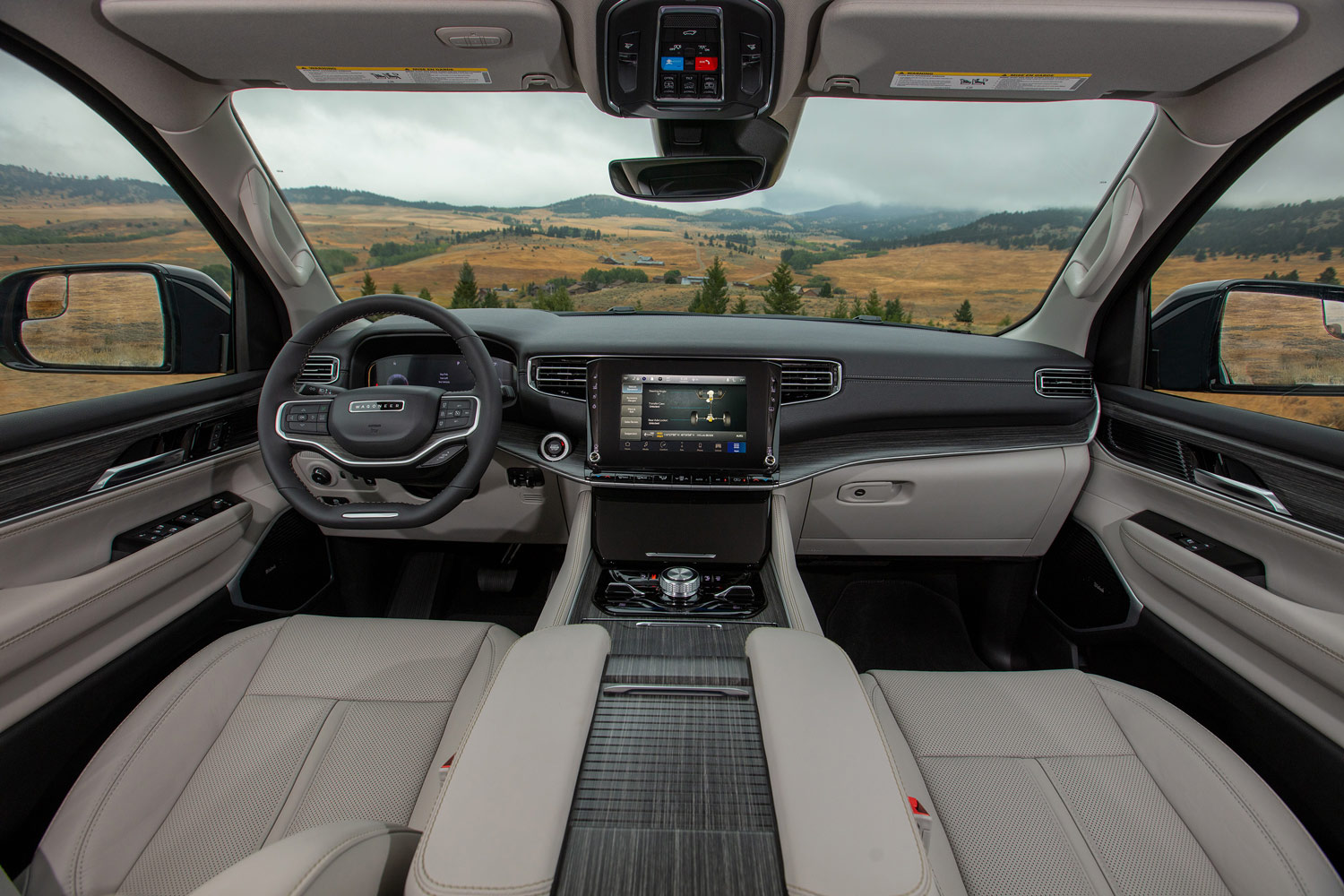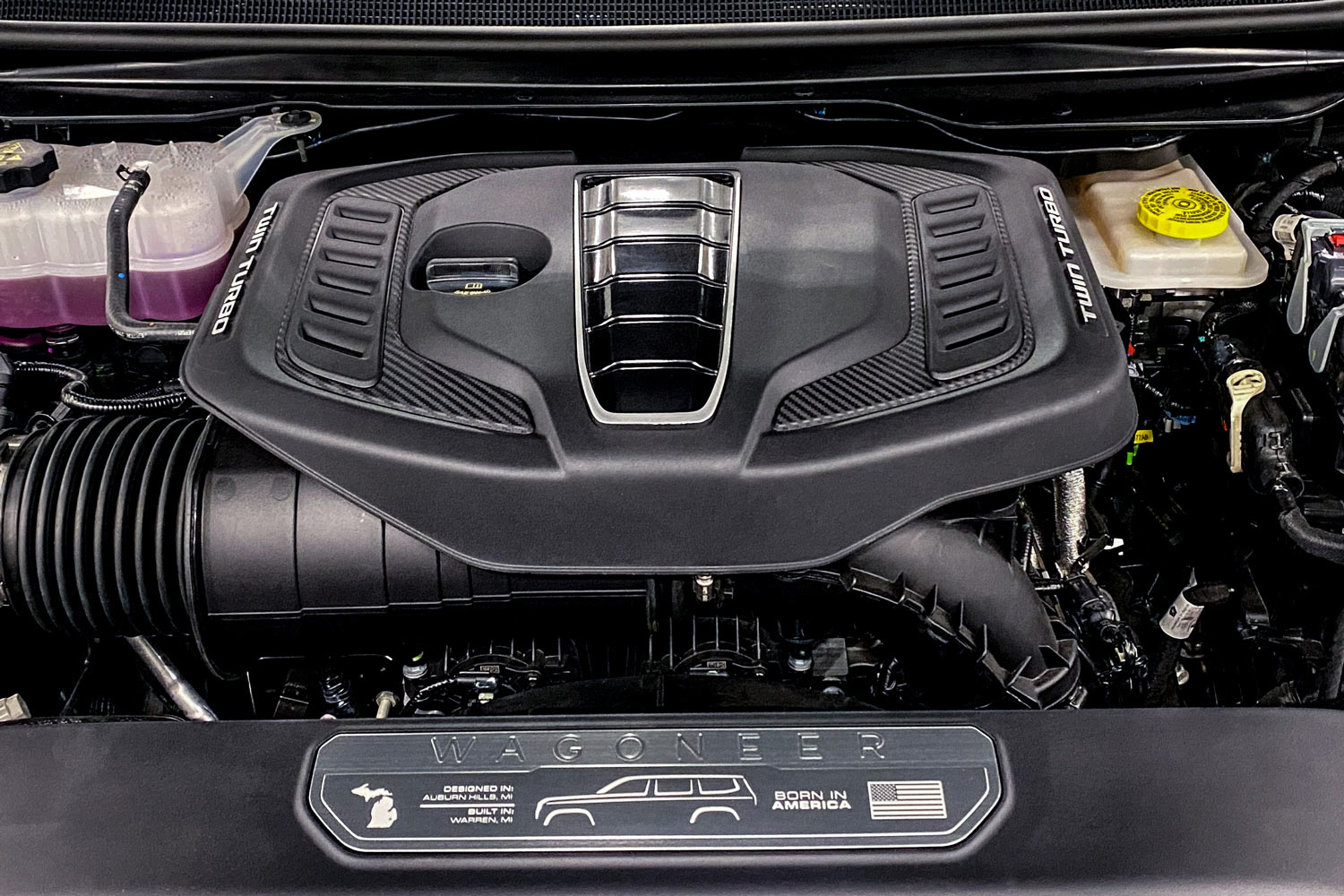Compared 2023 Chevrolet Suburban vs 2023 Jeep Wagoneer L
Jeep hopes to lure customers away from the segment's stalwart by piling on features.
 Chevrolet | Jeep
Chevrolet | Jeep
Article QuickTakes:
The fight is on in the full-size SUV segment, where the new-for-2023 Jeep Wagoneer L sets its sights on the 2023 Chevrolet Suburban. It’s difficult to match the Suburban’s level of popularity and name recognition — the model has served families well since its debut all the way back in the mid-1930s — but the Wagoneer L aims to try, doing everything the Chevy can but with more refinement. Here we look at how these three-row, seven- or eight-passenger brutes differ.
 Chevrolet
Chevrolet
Suburban vs Wagoneer L: Price
The Suburban starts at about $59,000. For $1,000 more, shoppers can swap the base 335-hp 5.3-liter V8 for a 277-hp turbo-diesel. Four-wheel drive is a $3,000 option on everything except the RST, where comes standard. If you want something a bit more powerful, Chevy offers a 420-hp 6.2-liter V8 in its mid-level and above trims.
 Jeep
Jeep
Jeep charges $64,500 for the lowliest Wagoneer L and an extra $3,000 for four-wheel drive. While that base price is a fair bit higher than the Chevy’s, every model in this lineup employs a 420-hp twin-turbo inline-six. To get that kind of power in the Suburban, you’ll need to pay at least $70,500.
 Chevrolet
Chevrolet
Suburban vs. Wagoneer L: Features
Besides the horsepower advantage, Jeep justifies the Wagoneer L's $5,000 premium over the Suburban in a few ways. First, it provides a nicer tech setup, consisting of a 10.1-inch infotainment screen and 10.3-inch instrument panel. The base Suburban makes do with an 8.0-incher in the center stack and a 4.2-inch display in front of the driver. Second, the Wagoneer L treats all its occupants to leather-trimmed seats with heating up front; Chevy reserves those for non-base models. And third, while Chevrolet charges extra for blind-spot monitoring and adaptive cruise control, Jeep includes both features as standard equipment.
 Jeep
Jeep
The Wagoneer L also wins in towing capacity, with a maximum rating of 9,850 or 10,000 pounds depending on the driveline. The Suburban, meanwhile, is good for between 7,400 and 8,300 pounds.
 Chevrolet
Chevrolet
Suburban vs. Wagoneer L: Fuel Economy
The most efficient Suburbans run on diesel, seeing 23 mpg in two-wheel-drive form and 22 when paired with four-wheel drive, according to the EPA. While most people wouldn’t consider those numbers to be particularly impressive, it’s worth pointing out that Chevy’s smaller, car-based three-row Traverse can’t match them. As for the rest of the Suburban lineup, choose either of the V8s and you’ll see between 16 and 17 mpg. (Take note that the 6.2-liter requires premium for this mileage.)
 Jeep
Jeep
The Wagoneer L’s fuel economy falls somewhere in the middle of this. The EPA estimates that the L will see 20 mpg with two-wheel drive and 19 mpg when all four wheels are in play.
All vehicle pricing includes MSRP plus destination charges (set at the time of publication) and will be rounded to the nearest thousand.



